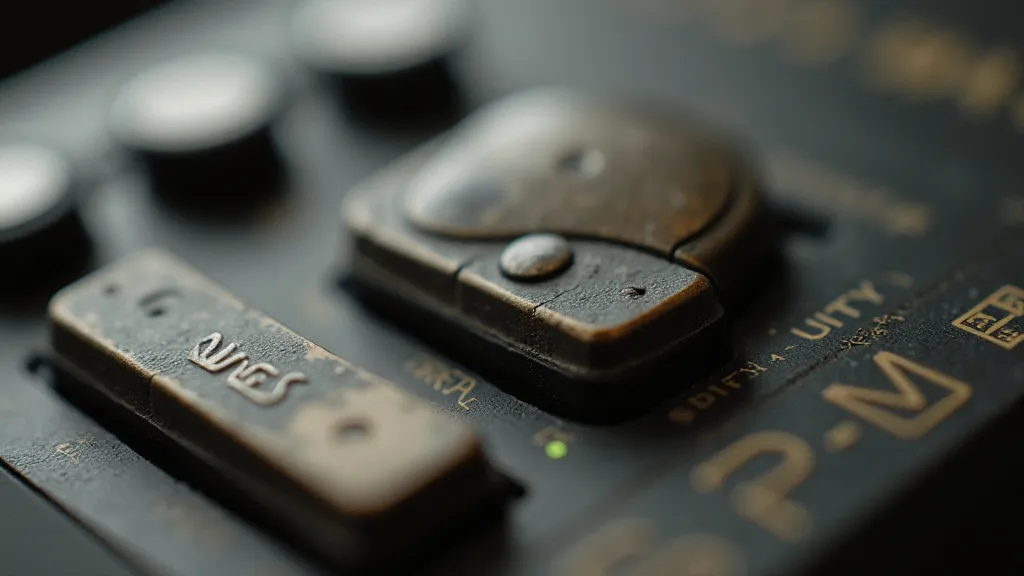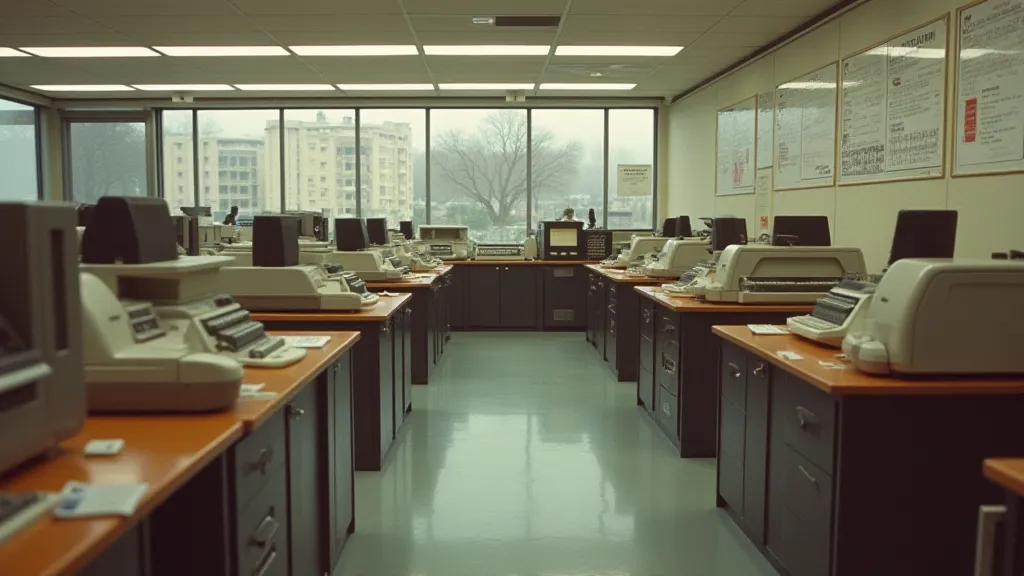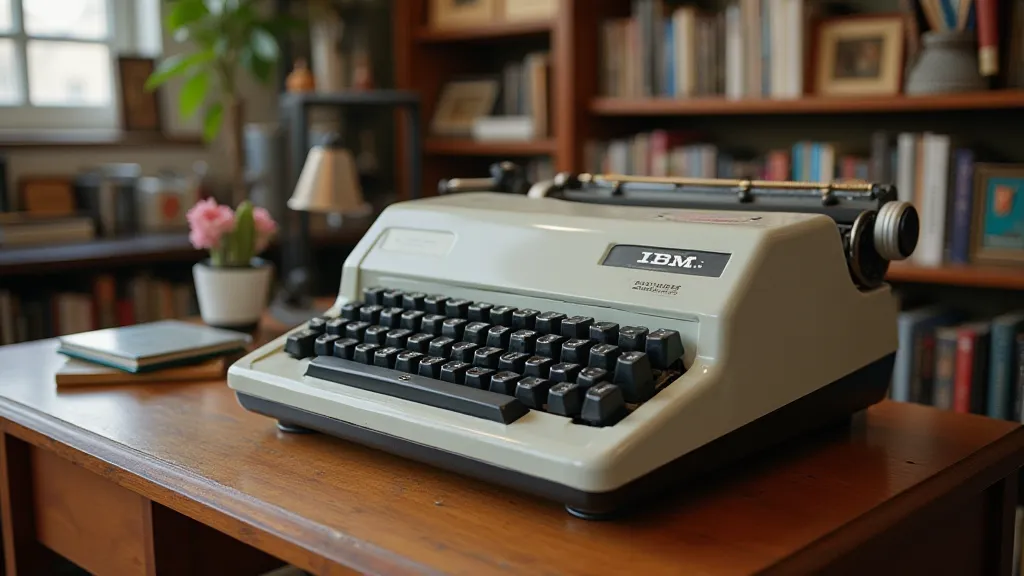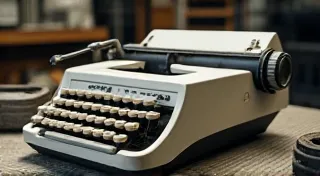The Legacy of the IBM Selectric Typewriter
The IBM Selectric typewriter stands as a monumental achievement in engineering and design, marking a significant shift in the landscape of office technology. More than just a typewriter, it represented a revolution in how people interacted with writing machines. This article delves into the history and impact of this iconic device, exploring its development, features, and lasting legacy.
A New Approach: The Birth of the Selectric
Prior to the Selectric, typewriters utilized a strike lever system where individual type slugs hit the paper. This system, while functional, was prone to mechanical issues and resulted in a noticeable “clack” with each keystroke. IBM, recognizing the limitations, initiated a decades-long quest for a quieter, more reliable design. This quest led to the development of the "Selectric" typing element – a spherical ball with raised characters.
The idea wasn’t entirely original; several inventors had explored spherical typing elements before. However, IBM’s engineering team, led by Joseph Matzke, perfected the design. The Selectric element, housed within a complex mechanism, rotated and shifted to strike the correct character on the platen, eliminating the need for individual type bars. Development began in the 1950s, with the first Selectric typewriter finally released in 1961.
The initial model, the IBM Selectric HD, was a deluxe machine and expensive, initially targeting high-end businesses and professional users. Its cost reflected the complex manufacturing process required to produce the Selectric element and its intricate mechanism. Maintaining these machines, even in restored condition, often requires meticulous attention to detail. For those delving into the intricacies of vintage typewriter mechanics, learning about the importance of lubrication can be invaluable to preserving their functionality.

Key Features and Innovations
The IBM Selectric boasted a range of groundbreaking features that set it apart from its predecessors:
- The Selectric Element: The core innovation. The sphere rotated and shifted, providing consistent character placement and a smoother typing experience.
- Quiet Operation: The absence of striking type bars significantly reduced noise levels, making it much less disruptive in office environments.
- Consistent Print Quality: The spherical element delivered consistent character impact, resulting in clean, uniform print quality.
- Typeface Flexibility: Typeface changes were accomplished by swapping out the entire Selectric element, allowing for a wider range of fonts than earlier models. This was a significant advancement over needing to change ribbons and adjust type slugs.
- Electric Models: IBM followed the initial HD model with electric versions, further enhancing speed and reducing fatigue.
Impact and Evolution
The introduction of the IBM Selectric fundamentally altered the typewriter industry. It quickly became the standard for businesses worldwide, largely displacing older typewriter models. Its quiet operation and superior typing experience proved immensely popular. The design complexities meant that repairs could be challenging, particularly when issues like a sticking typewriter carriage arose. Understanding common problems and their solutions was crucial for maintaining these machines. The dedication required to restore a vintage typewriter to its former glory often involves meticulous attention to alignment; understanding demystifying typewriter alignment is a vital first step for anyone undertaking such a project.
Throughout the 1960s and 1970s, IBM released numerous variations of the Selectric, including more affordable models and electric versions. The "Silent Typewriter," a simplified, less expensive model, brought the Selectric technology to a wider audience. The shift in manufacturing, and the increasingly complex nature of the machines, demanded a level of precision that modern technology has arguably surpassed, yet the ingenuity remains captivating. The resulting machines, even in excellent condition, often bear the subtle marks of time and use; many collectors are particularly interested in the nuances of deterioration, with some tracing the evolution of ink’s impact on the machine over decades, appreciating the aesthetic of chromatic decay as a unique form of historical documentation.

The Dawn of the Computer Age
While the Selectric reigned supreme for decades, the rise of personal computers and word processing software inevitably signaled the beginning of its decline. The capabilities of computers surpassed the functionality of even the most advanced typewriters. Nevertheless, the legacy of the IBM Selectric remains significant. The transition from mechanical solutions to digital ones involved a complex evolution of printing technologies, a journey far removed from the tactile experience of the Selectric.
The Selectric’s innovative design principles influenced later computer printers and printing technologies. The shift from mechanical typing elements to digital printing owes a debt to the advancements pioneered by IBM. The meticulous engineering and precision manufacturing techniques developed for the Selectric paved the way for advancements in numerous industries, demonstrating the far-reaching impact of this seemingly simple device. The restoration process often presents unique challenges, particularly when dealing with less common models. Consider the restoring an Escort typewriter, which showcases a fascinating set of restoration hurdles.

Collecting and Restoration Today
Today, the IBM Selectric remains a sought-after collectible for typewriter enthusiasts and vintage technology aficionados. Many collectors restore these machines to their former glory, appreciating their craftsmanship and historical significance. Maintaining a Selectric requires patience and a keen understanding of its complex mechanics, but the result is a beautifully functional piece of history. The very act of restoring a Selectric offers a unique insight into the manufacturing processes and design philosophies of a bygone era. The pursuit of perfectly restored functionality often means tackling issues beyond the purely mechanical, including ensuring the ribbon delivers the desired quality and tone. A superb restoring a Royal Quiet De Luxe is a testament to this dedication and artistry, embodying the ideal of a revitalized mechanical masterpiece.
Beyond the mechanical aspects, the ribbon itself, crucial for producing those crisp, clean impressions, has a rich history. For those intrigued by the broader context of writing tools and their evolution, exploring the cartographer’s hand and the poetic history of ribbons offers a fascinating parallel.
Conclusion
The IBM Selectric typewriter stands as a testament to the power of innovation and engineering excellence. Its revolutionary design transformed the office landscape and left an enduring mark on technology. While it may no longer be the primary writing tool, the legacy of the IBM Selectric continues to inspire and captivate those who appreciate its unique place in history. The Selectric isn't merely a typewriter; it's a symbol of a pivotal moment in technological advancement, a reminder of the ingenuity and dedication that shaped the modern world. Its impact extends far beyond its immediate function, resonating with our fascination with mechanical ingenuity and the enduring beauty of meticulously crafted objects.





